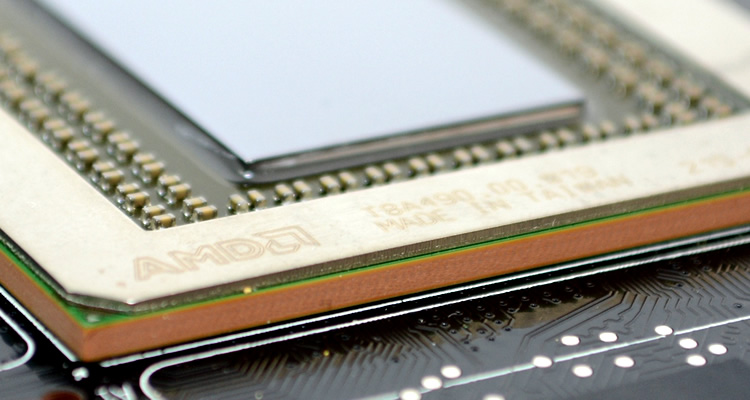Power Consumption & Temperatures
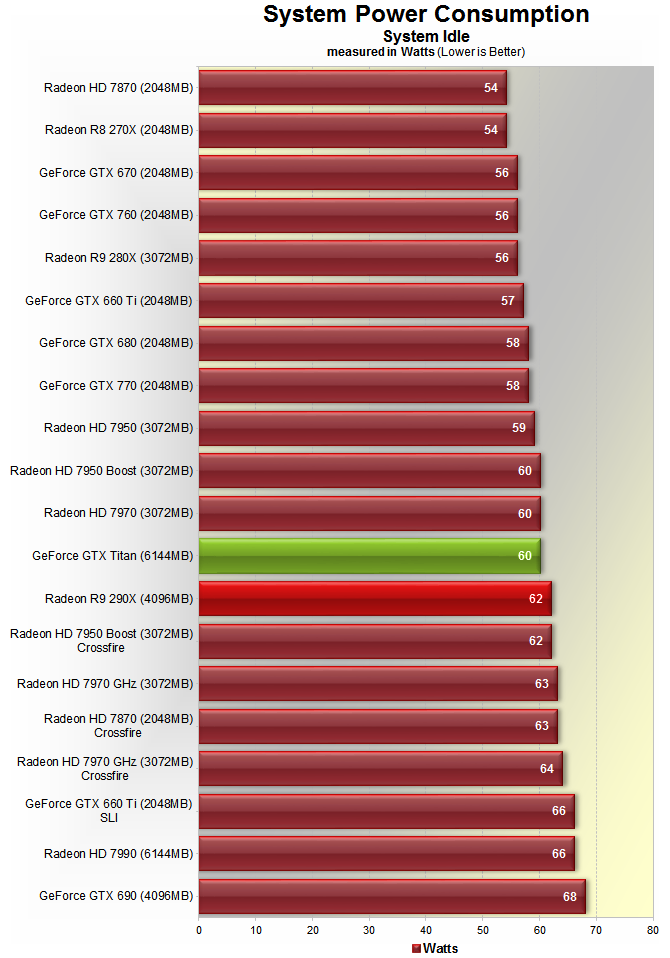
The idle results aren't particularly interesting, as you can see the R9 290X's system idle consumption is within a few watts of the HD 7970 GHz Edition and GTX Titan.
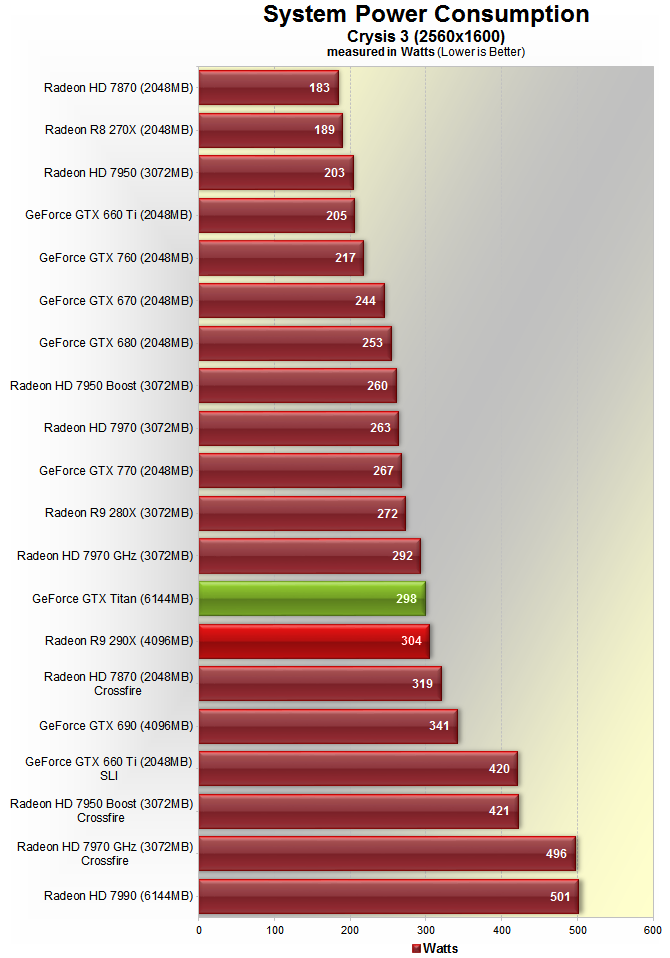
When playing Crysis 3, the R9 290X system consumed 304 watts – 2% more than the GTX Titan, which isn't bad considering the former was 15% faster in this title. Similarly, the R9 290X consumed just 4% more power than the Radeon HD 7970 GHz Edition despite being 41% faster.
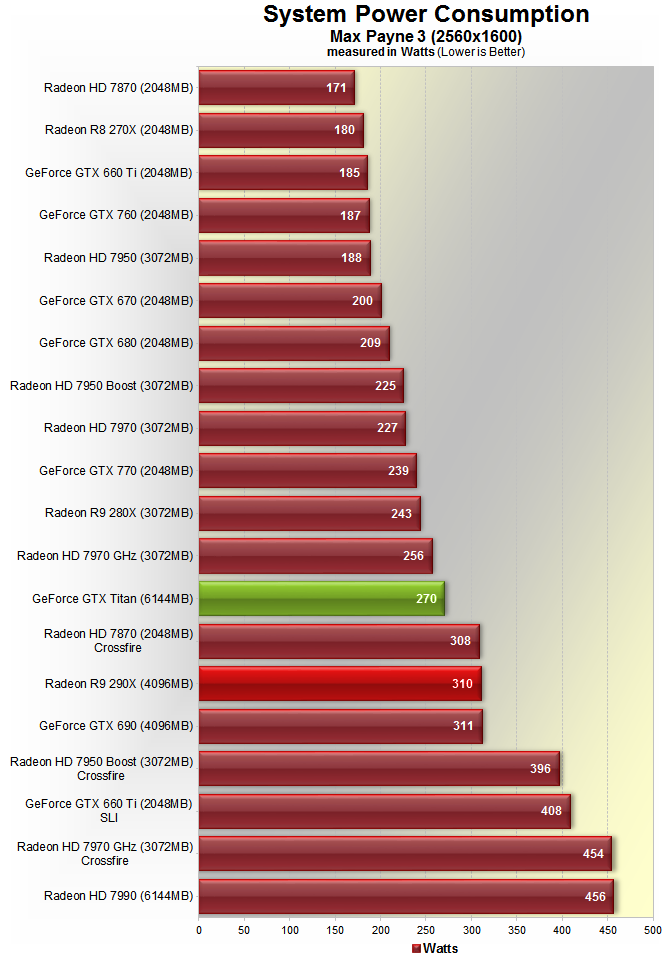
When testing with Max Payne 3, the R9 290X consumed roughly the same as a pair of HD 7870 Crossfire cards or the GTX 690 at 310 watts. That works out to about 15% more power than pulled by the GTX Titan and 21% more than the HD 7970 GHz Edition, though the latter is easily justifiable when you look at the R9 290X's 30% performance advantage.
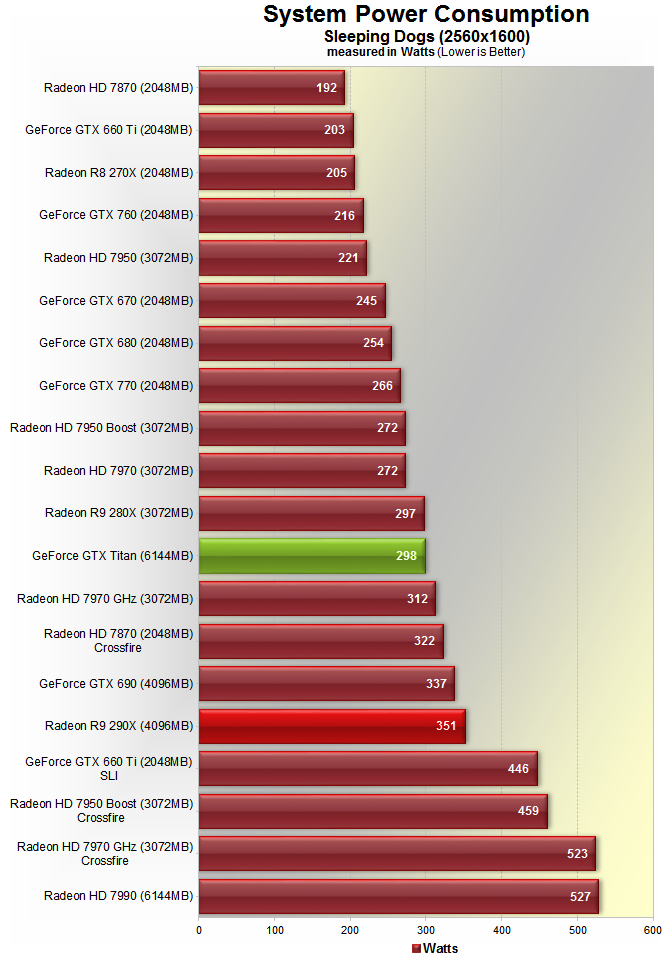
The R9 290X consumed 351 watts when running Sleeping Dogs, which was 18% more than the GTX Titan's 298 watts, but AMD's solution was also 13% faster. Compared to the HD 7970 GHz Edition, the R9 290X guzzled 13% more power while being 38% faster.
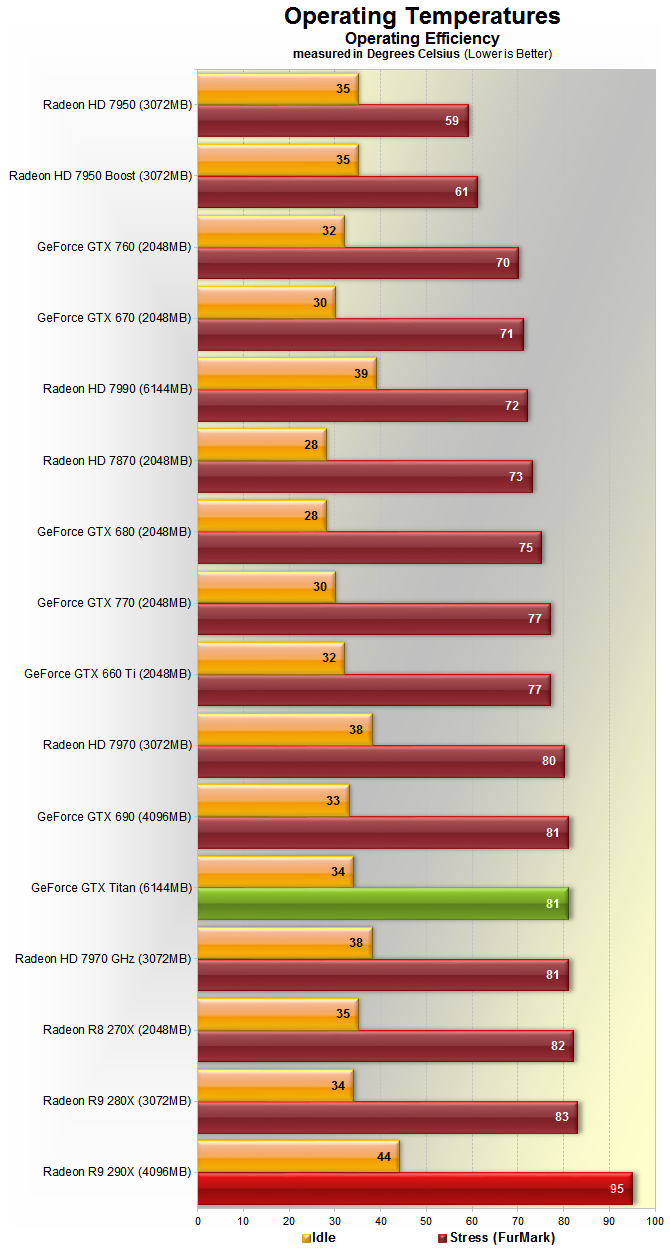
When gaming, a Core i7-4770K system armed with the R9 290X can consume up to 351 watts, which is a lot. A lot of that power is converted into heat and as a result, the R9 290X hit 95 degrees under load using AMD's reference cooler. The card was toasty at idle too, never dropping below 44 degrees.
